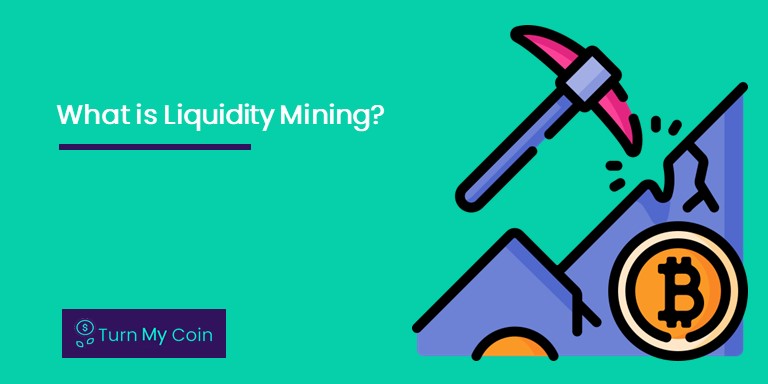Last updated on March 11th, 2023 at 08:10 am
Introduction
With the evolution of the Cryptocurrency space, developers of Cryptocurrencies try and entice investors with higher rewarding products. Staking, Yield farming, Liquidity mining and Crypto Mining are few examples. If you are in this space and have observed it grow over time, you would be equally surprised and happy as I am.
Yield Farming and Liquidity mining have become the buzzwords with the explosive growth of Decentralized Finance aka ‘DeFi’. As we stand today, there are several opportunities to earn and multiply passive income. I guess this is enough of a buildup, let’s dig deep into the concepts now.
Please note: I am writing about the various concepts first and then differentiating them through a comparison table later in the post. Hope this structure suits you well.
Let’s begin!
What is Staking?

Staking is a process of earning rewards wherein the investor holds the cryptocurrency in a staking wallet. Staking is possible only in the case of Proof of Stake (PoS) cryptocurrencies. One needs to stake crypto-assets to create new blocks of the PoS blockchain.
Staking is the broadest of the four terms under our analysis
The underlying principle of Staking is to validate transactions through randomly but criteria based selected nodes.
The node that stakes a higher number of Cryptocurrency, higher would be its chances of getting selected by the network for validating. Since the number of Cryptocurrency matters in getting higher rewards on the PoS network investors like us normally prefer parking their funds in Staking Pools. Further, many exchanges like Binance, CEX.IO, Huobi etc operate Staking Pools.
Additionally, We have an exhaustive article on Staking and how it can help you earn rewards which you can refer to understand more about Staking.
What is Yield Farming?

Yield Farming is a complex set of strategies for earning rewards by lending cryptocurrencies to DeFi platforms at Decentralized Exchanges (DEXs). The participants are often termed as ‘Yield Farmers’.
Yield farming specifically refers to providing Liquidity to a DeFi platform.
In order to maximize their profits Yield Farmers leverage different DeFi platforms like Uniswap, Compound, Aave.
Yield farmers forward their money into Yield Farming Pools i.e provides liquidity. In return, a Yield Farmer gets a share of platforms fees whenever he provides liquidity to a DEX. There is no lock-in period in Yield Farming. It is completely up to the Yield Farmer when he wants to pull out his crypto assets from the Pool.
Historically, the concept of Yield Farming became popular in 2020 when reputed DeFi lending platforms started issuing Governance Tokens. Compound was the first to do so. Compound had started a new trend. Shortly, Balancer, Curve, Aave followed.
Undoubtedly, this was one of the first times when a cryptocurrency ensured gains for both borrowers and depositors during Yield Farming.
Why do Exchanges pay for Yield Farming?
The main purpose of Yield Farming is to provide Liquidity to Decentralized Exchanges (DEXs). Depending upon their convenience, the farmers can either lend their tokens for the long term or short term. Accordingly, the more one lends higher are the returns.
Typically, staking offers returns in the ranges of 5% and 15%. In contrast, Yield farming provides a higher Annual Percentage Yield (APY) which may range from 5% and go up to 250%.
How does Yield Farming work?
Yield farmers provide liquidity to an Automated Market Maker (AMM) like Uniswap, Pancakeswap by lending their assets to such DeFi platforms.
Liquidity providers provide liquidity to the pool by depositing trading pairs. Out of the two assets say Token A and Token B. One would be a stable coin like USDT, USDC, BUSD, BNB, ETH, ETH2.
For now, let’s keep the process of calculation simple to understand. Let’s say a particular AMM uses a mathematical formula –
A*B=X
Here, A and B represent values of Token A and Token B respectively and X is a constant.
Each time prices of A increase, in order to balance the equation the algorithm should reduce the price of B. For example, let me take the pair of ETH/USDT.
If people buy ETH they, in turn, add USDT to the pool and pull out ETH from the pool. This means that the price of ETH would increase in this pool to balance the A*B=X equation.
Likewise, the price for USDT will decrease as the supply of USDT is higher in the pool. It’s a noteworthy mention that whenever there is a price difference in markets on the same asset arbitrage happens.
AMMs try and Balance their Calculations
As a result, people would start selling their ETH on this pool thereby increasing its supply again and reducing the price. Importantly, each of these times the algorithm is trying to balance the A*B=X equation.
In a nutshell, the values of A & B are inversely proportional to each other in the case of most AMMs. This is the jist of working of an AMM, however, AMMs normally use more complex mathematical equations.
Though, the returns in Farming are very attractive, parking your funds in farming has its own risks. Most farming pools reward farmers in the same currency that was initially lent for farming. Hence, if the market turns extremely bullish or bearish there are high chances of farmers losing their profits.
What is Liquidity Mining?

Liquidity mining is considered to be a subset of Yield farming wherein the liquidity providers get a share of fees and platform tokens as rewards. This difference is often ignored by most because Yield farming in itself includes Liquidity Mining. It is just the nature of the distribution of rewards that makes them different.
As mentioned earlier, Compound started rewarding its users with governance token COMP. Both lenders and borrowers were given governance tokens of the platform. For most liquidity providers this arrangement could set off whole or at least some amount of Impermanent loss.
Impermanent Loss is a loss that is suffered by a Liquidity provider when his assets are under a liquidity pool. It normally happens when the ratio of tokens in the pool becomes uneven.
What is Cryptocurrency Mining?

A classic example of cryptocurrency mining is that of Bitcoin’s Blockchain network. Bitcoin’s network uses Proof of Work processing for validating transactions & creating new blocks. In order to create a new block, a miner needs to solve a complex mathematical hash. The miner who solves this hash first gets rewarded.
Validation of transactions through mining requires high computational power and is highly energy inefficient.
Suggested articles
- Top 9 questions about Bitcoin & How it can change your life
- What is Staking of Cryptocurrencies? How to claim staking rewards?
With the basics in place, we can now head to the comparison between Staking, Yield Farming, Liquidity Mining and Cryptocurrency Mining
Comparison Table – Staking, Yield Farming, Liquidity Mining, Cryptocurrency Mining
| Parameter for Comparison | Staking | Yield Farming | Liquidity Mining | Cryptocurrency Mining |
|---|---|---|---|---|
| 1. Purpose | Provide stability to the network | YF provides liquidity to the Decentralized Exchanges | As the name suggests it provides liquidity to the pools | Validates & introduces new currencies in the market. |
| 2. Returns | Typically from 5% to 15% | Ranges from 5% to 250% | 5% to 250% + rewards in form of tokens | The first miner to solve the hash gets that cryptocurrency as a reward |
| 3. Lock-in Period | To earn higher rewards you have to stake your tokens in highly rigid fixed staking platforms. Further, there may be thresholds on minimum investment that needs to be staked | There is no lock-in period in the case of Yield Farming | No Lock-in period | No Lock-in period but the computing devices need to operate continuously to mine assets. |
| 4. Rewards dependence | Rewards are based upon the quantum of a node’s participation. A node that holds more tokens gets more rewards | Rewards depend upon the liquidity pool’s APY that keeps changing along with Pool’s activity and involved Token value | Entirely dependent on the pool and involvement of the token | The ability of the computing devices that the miner is using |
Security: is a key determinant in implementation of any of the concepts.
| 5. Security | Staking runs on direct blockchain. The Blockchain network is a very secure network. If a hacker tries to hack into the network there are high chances that his own stake will get forfeited. | Yield farming runs on Smart Contracts. It is based upon the understanding of yield farmers with the developers. A poorly coded smart contract can result in vulnerabilities that can be exploited by Hackers. There are insurance coverage platforms like Nexus that help cover the loss suffered on your assets but their fees eat up a huge chunk of your capital. | Liquidity mining is dependent upon smart contracts. If the smart contracts are poorly coded Hackers can affect the network. Even cautious users can suffer due to poorly coded smart contracts. | Highly secure as the miners themselves provide integrity to the network. Further, even if the miners have a mala fide intention, it would require at least 51% of all the miners to affect the system. |
| 6.Impermanent Loss | There is no impermanent loss because you are holding your own asset in your wallet. However, there could be an opportunity cost if the price of the token skyrockets or crashes during the period of staking. The staked assets cannot be easily pulled out and sold. | There are high chances of Impermanent loss due to the variation of token values. Many times an investor can get better returns without pooling if the difference in the values of tokens becomes significant | Impermanent loss can be there however, it is reduced to a certain extent because the liquidity provider also receives awards in local cryptocurrency. | No Impermanent Loss |
| 7.Shortcomings | -Low APY rates -Rigid lock-in period | -Vulnerability of Smart Contracts -Impermanent Loss | Similar to YF | -Energy Inefficient -Lower returns |
Conclusion
Staking, Yield Farming, Liquidity Mining and Cryptocurrency mining are the concepts for earning a higher return on investment. Each product has its own benefits & shortcomings.
However, a risk-tolerant user is more inclined towards investing in Yield Farming or Liquidity Farming it is always recommended to undergo thorough due diligence before investing.
For risk-averse users staking is the best option. Cryptocurrency mining is a safe but capital and energy-intensive process.


